Not only commemorative, commemorative or ancient coins can become valuable coins, but also coins of the last 10-15 years. A small circulation, almost imperceptible to an untrained eye, differences in the stamp - all this can add value to the coin in the collection market. After reading this rating, it is worth checking a trifle in your wallet - perhaps it was you who had one of the most expensive Russian coins lying around.
Collectible coin of Sochi 25 rubles, issue of 2011/2012
Can be bought for: 30,000 rubles.
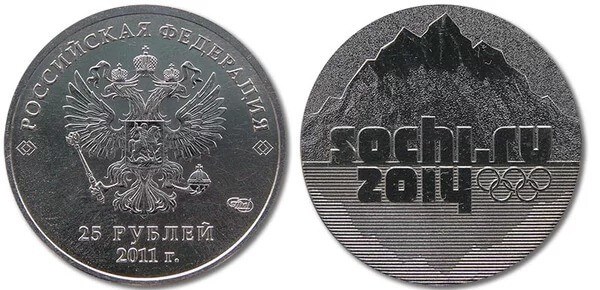 The list of the most expensive coins of modern Russia is opened by the well-known and beloved by numismatists coin from the series issued for the Olympic Games. The aesthetic and memorable value of these coins is quite high - even novice collectors strive to collect all eleven coins (differing in the year of issue, color of the image, etc.). But one series of these commemorative coins is more valuable than others - the so-called. presentation, which was distributed to guests in the spring of 2011.
The list of the most expensive coins of modern Russia is opened by the well-known and beloved by numismatists coin from the series issued for the Olympic Games. The aesthetic and memorable value of these coins is quite high - even novice collectors strive to collect all eleven coins (differing in the year of issue, color of the image, etc.). But one series of these commemorative coins is more valuable than others - the so-called. presentation, which was distributed to guests in the spring of 2011.
It differs from the usual version primarily in the large (compared to later) monogram of the St. Petersburg Mint. In addition, differences can be found in small details in the image of the Russian coat of arms.
In 2012, a small number of "Talismans of the Olympiad" with a large SPMD monogram appeared, which made the coins different from the rest of the circulation. These "Talismans" can currently be purchased for 1000 rubles.
There is an even rarer variant, the "trick" of which is the higher location of the emblem of the St. Petersburg Mint.
10 rubles of issue 2012/2013
Cost: 30,000 rubles.
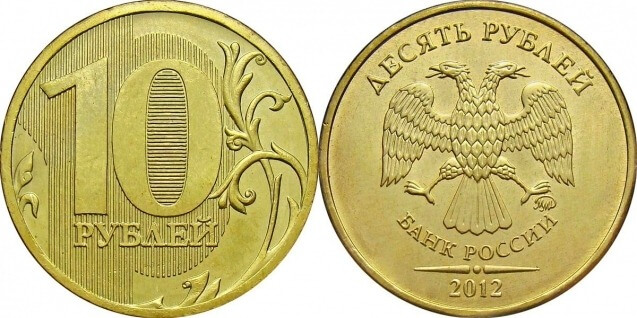 Every year in the Russian Federation, the Moscow Mint issues new ten-ruble coins. But even among ordinary, ordinary coins, you can find rarity. Just in 2012 - 2013, one of the old stamps, on which ten-ruble notes were printed, fell out of use, so coins printed with its use are very rare.
Every year in the Russian Federation, the Moscow Mint issues new ten-ruble coins. But even among ordinary, ordinary coins, you can find rarity. Just in 2012 - 2013, one of the old stamps, on which ten-ruble notes were printed, fell out of use, so coins printed with its use are very rare.
They can be distinguished primarily by the type of hatching that fills the number zero on the reverse. In ordinary coins, the first and final touches are almost invisible, but in old-stamped ones they are wide and thick.
It is not known how many similar copies were minted, and it is quite possible that such a ten-ruble note is now in someone's wallet.
1 ruble, 2 rubles and 5 rubles 2003
Collectors buy for: 30,000 rubles.
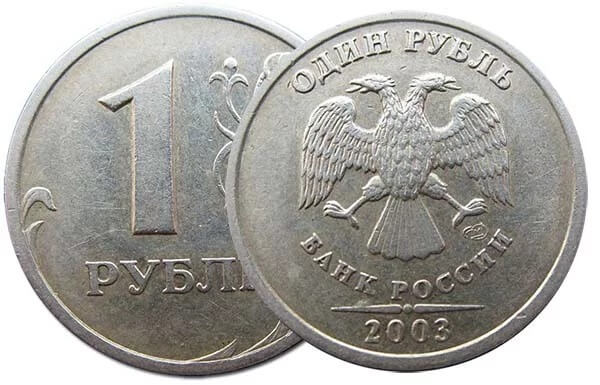 It was considered a fact that in 2003 the Moscow Mint issued exclusively banknotes in denominations of 10 and 50 kopecks. And then, in 2006, ruble coins suddenly appeared in circulation, which immediately became a numismatic rarity.
It was considered a fact that in 2003 the Moscow Mint issued exclusively banknotes in denominations of 10 and 50 kopecks. And then, in 2006, ruble coins suddenly appeared in circulation, which immediately became a numismatic rarity.
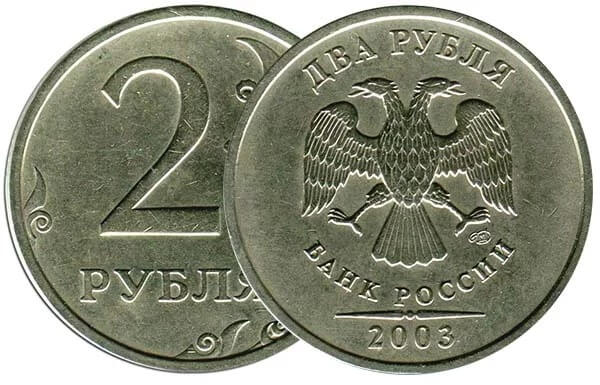 Once they were intended as a gift to the delegations who came to the celebrations marking the 300th anniversary of the "Northern Capital". But this idea had to be abandoned, as the souvenir sets for some reason were not formed on time. And for about three years the coins lay in the basements of the MMD, until it was decided to put them into circulation.
Once they were intended as a gift to the delegations who came to the celebrations marking the 300th anniversary of the "Northern Capital". But this idea had to be abandoned, as the souvenir sets for some reason were not formed on time. And for about three years the coins lay in the basements of the MMD, until it was decided to put them into circulation.
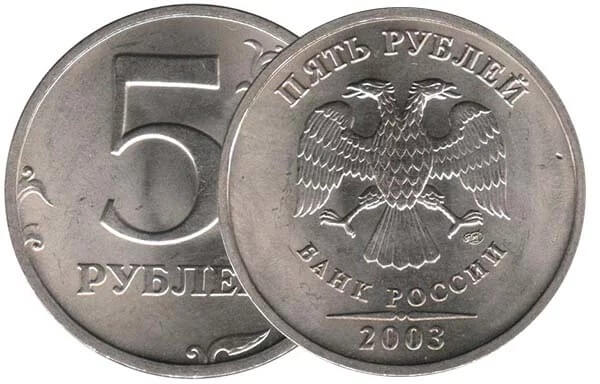 A small circulation (no more than 15,000 pieces) guarantees that they will only get more expensive in price.
A small circulation (no more than 15,000 pieces) guarantees that they will only get more expensive in price.
50 kopecks, 1 ruble and 5 rubles of 2001 issue
Cost: 100,000 rubles.
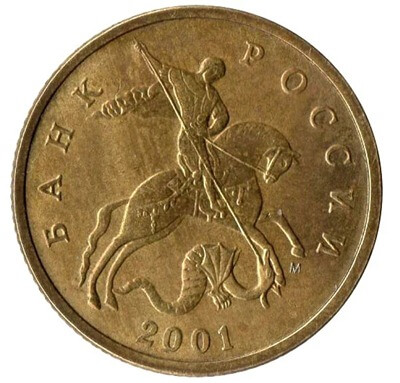 According to official information, all these coins have never been released into circulation. Nevertheless, some numismatists in Russia are proud of their presence in their collections. These coins are unique, extremely rare, so their price can be significantly higher than the declared 100,000 rubles. Their uniqueness has provoked the emergence of a large number of fakes - however, they are unlikely to be found in the small change compartment of a common man in the street.
According to official information, all these coins have never been released into circulation. Nevertheless, some numismatists in Russia are proud of their presence in their collections. These coins are unique, extremely rare, so their price can be significantly higher than the declared 100,000 rubles. Their uniqueness has provoked the emergence of a large number of fakes - however, they are unlikely to be found in the small change compartment of a common man in the street.
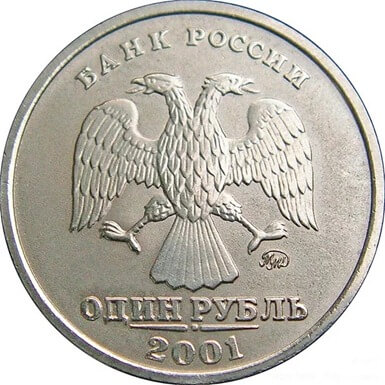
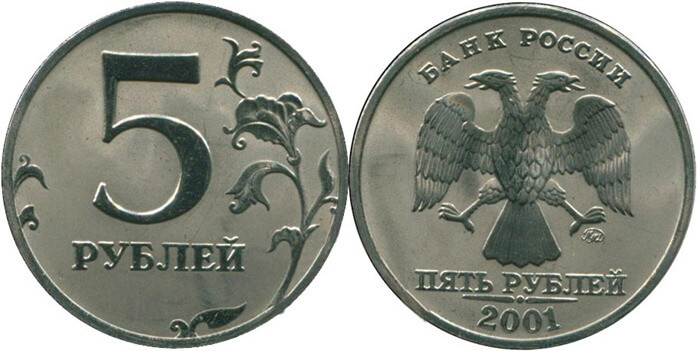 A person who is far from numismatics can easily confuse the very expensive (due to its rarity) 1-ruble coin of 2001 of the regular minting with the commemorative ruble issued in 2001 in honor of the 10th anniversary of the CIS. Its price is about two hundred rubles.
A person who is far from numismatics can easily confuse the very expensive (due to its rarity) 1-ruble coin of 2001 of the regular minting with the commemorative ruble issued in 2001 in honor of the 10th anniversary of the CIS. Its price is about two hundred rubles.
Coins of the St. Petersburg Mint 2016
They are ready to buy for: 300,000 rubles.
With the sixth place in the rating, we move into the category of the most expensive coins in Russia. Collectors are ready to buy them for 200-300 thousand rubles, as well as coins issued by SPMD in 2016.
 Why are they so valuable? In recent years, "ordinary" metal banknotes began to be issued by the Moscow Mint, but commemorative coins were given to the "Northern Capital". That is why “simple” coins of SPMD issue are so highly valued. For example, a set of coins from one to ten rubles, made in 2016.
Why are they so valuable? In recent years, "ordinary" metal banknotes began to be issued by the Moscow Mint, but commemorative coins were given to the "Northern Capital". That is why “simple” coins of SPMD issue are so highly valued. For example, a set of coins from one to ten rubles, made in 2016.
In Russia, only one such set was found, and then thanks to the Wolmar Internet auction. Collectors saw for the first time a lot of 1, 2, 5 and 10 ruble coins with the SPMD monogram. As a result, the lot was sold for an impressive amount of 1,277,563 rubles.
10 rubles of 2013 release
Cost: 300,000 rubles.
 The rarity and value of the coin can be added by a feature that is almost invisible to the average user. Paying with a ten-ruble coin for some trifle, hardly anyone paid attention to the inscription of the date digits on the coin. But this can play a huge role in determining the rarity of a coin.
The rarity and value of the coin can be added by a feature that is almost invisible to the average user. Paying with a ten-ruble coin for some trifle, hardly anyone paid attention to the inscription of the date digits on the coin. But this can play a huge role in determining the rarity of a coin.
In 2013, two varieties of the ten-ruble note were released - one with the usual outline of numbers, and the second with a font reminiscent of the pre-revolutionary one. If the price of the former coincides with the indicated one, then the price of the latter is many times higher than it. You can find the difference with the usual 10 rubles if you look closely at the number 3 in the date "2013". Her lower part of the tail is straight, while in the standard version the figure ends with a bold dot at the bottom.
Coins of the St. Petersburg Mint 2011 and 2012
Cost: 300,000 rubles.
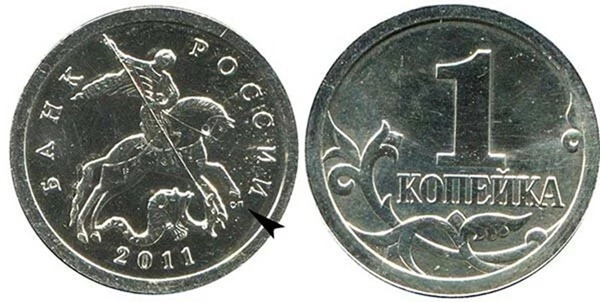 Another rarity of SPMD production. Interestingly, in addition to ordinary coins, those that had ceased to be issued by MMD by this time were also printed, namely 1 kopeck and 5 kopecks. Very few coins were found.
Another rarity of SPMD production. Interestingly, in addition to ordinary coins, those that had ceased to be issued by MMD by this time were also printed, namely 1 kopeck and 5 kopecks. Very few coins were found.
In the opinion of numismatists, SPMD in 2011 minted only 5-6 sets of such banknotes. Perhaps the mint decided to try out a new stamp and printed several sets at best, and then - not to waste the good - put them into circulation.
And in 2012, the story with the trial release was repeated, but this time not 1 or 5 kopecks were in free circulation. Perhaps they settled in someone's private collection.
5 rubles of the 2006 release
Cost: 300,000 rubles.
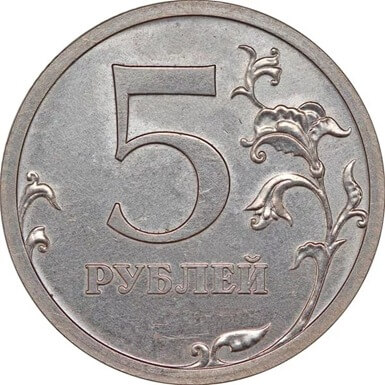 One of the most expensive coins in Russia is a myth-coin, which many have heard about, but nobody managed to hold it in their hands. So far, numismatists have had the opportunity to admire her photograph (though large and of good quality) posted on the website of one of the auctions.
One of the most expensive coins in Russia is a myth-coin, which many have heard about, but nobody managed to hold it in their hands. So far, numismatists have had the opportunity to admire her photograph (though large and of good quality) posted on the website of one of the auctions.
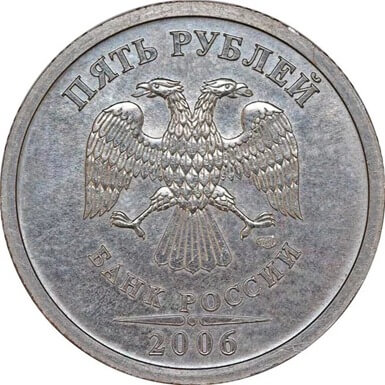 It is still unknown whether this is a fake or a real coin. Also, no one knows who owns it now.
It is still unknown whether this is a fake or a real coin. Also, no one knows who owns it now.
5 kopecks release 1999
Cost: 300,000 rubles.
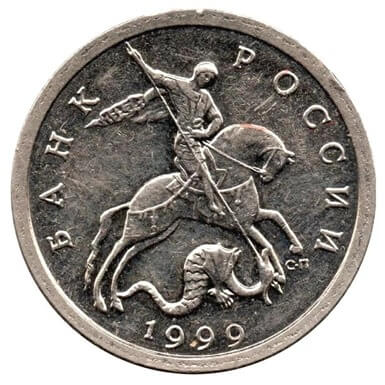 This coin is more fortunate - no one doubts its reliability. Her story began from the moment of a happy discovery by a Kemerovo numismatist in a sack of change. For his attentiveness, he was adequately rewarded by selling the find at an auction and receiving 300 thousand rubles for it.
This coin is more fortunate - no one doubts its reliability. Her story began from the moment of a happy discovery by a Kemerovo numismatist in a sack of change. For his attentiveness, he was adequately rewarded by selling the find at an auction and receiving 300 thousand rubles for it.
Perhaps the coin was part of a test batch issued by SPMD to check new stamps. As a result, it could be sent into use together with a mass circulation of 5 kopecks of the 1998 release. However, in 1999, the Central Bank decided to abandon the mass issue of all denominations, and the 5-kopeck banknote moved into the category of “immediately purchase for collection”.
Since then, no more than five copies have been recorded.
5 rubles of 1999 release
Estimated at: 300,000 rubles.
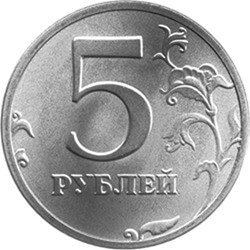 Why coins in denominations of 5 rubles, issued in 1999, have become so rare? The fact is that in the previous two years, so many of them were made that new ones were not required for another ten years. So all coins made between 1998 and 2008 are either prototypes for testing stamps, or souvenir sets with a small edition.
Why coins in denominations of 5 rubles, issued in 1999, have become so rare? The fact is that in the previous two years, so many of them were made that new ones were not required for another ten years. So all coins made between 1998 and 2008 are either prototypes for testing stamps, or souvenir sets with a small edition.
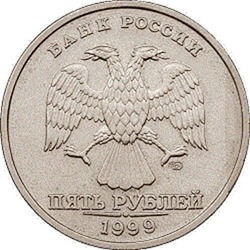 Here is one of such exceptions - a five-ruble coin of 1999 issue. So far, only four such copies have been found.
Here is one of such exceptions - a five-ruble coin of 1999 issue. So far, only four such copies have been found.
The owner, who presented the super-rare coin at a numismatic auction, said that he received it for change during a trip in a minibus. At first, his words were received with skepticism, but then experts made sure of the authenticity of the coin stamped by the St. Petersburg Mint.
It turns out that you can get rich by accident. So do not be lazy to examine the contents of a purse or piggy bank, suddenly there is a coin there that can be classified as rare.

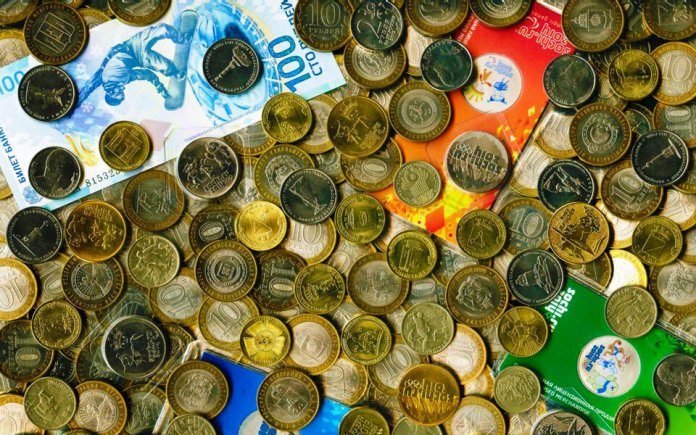
Could offer some coins, but to whom?
savings bank